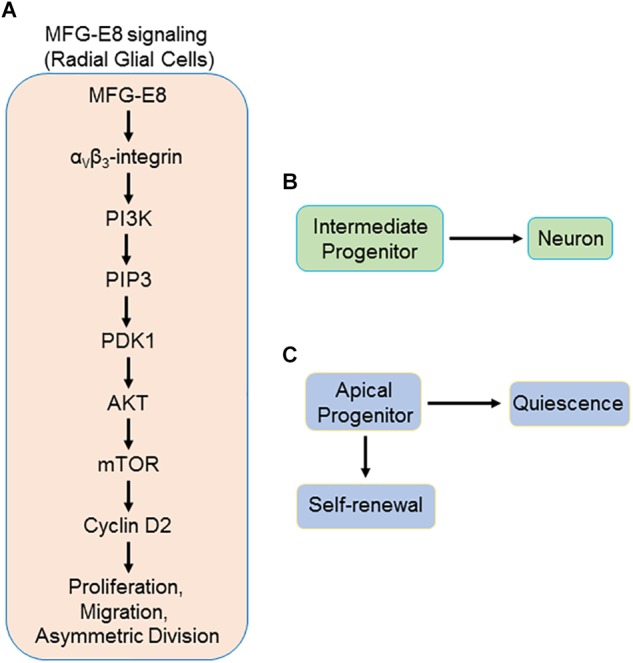FIGURE 1.

Schematic representation of proposed MFG-E8 signaling in radial glial cells (RGL) via αvβ3/PI3K/Akt/mTOR pathway. (A) MFG-E8 binds to αvβ3-integrin on the basal process of RGL, leading to activation of PI3K. PI3K phosphorylates PIP2 and produces PIP3. PIP3 then activates PDK1 which subsequently activates Akt by phosphorylation. Phosphorylation of Akt activates mTOR. mTOR activates several transcription factors leading to the downstream activation of several target genes, including CCDN2, which produces cyclin D2 mRNA. Cyclin D2 mRNA is transported to the basal process by a carrier protein that recognizes its cis-transport element that resides in the 3′ UTR region. The mRNA is then translated in the basal process by ribosomes into cyclin D2 protein. Asymmetric division of RGL leads to the production of two daughter cells. (B) Intermediate progenitor, with no cyclin D2, which subsequently undergoes differentiation into a neuron, and (C) apical progenitor, which has inherited the cyclin D2. This apical progenitor has the capacity for self-renewal through further asymmetric divisions. On the other hand, depending on additional signals received, this RGL may go into quiescence. MFG-E8, milk fact globule-epidermal growth factor-factor VIII; RGL, radial glial cells; PIP2, phosphatidylinositol 3,4-bisphosphate; PIP3, phosphatidylinositol 3,4,5-trisphosphate; PDK1, 3-phosphoinositide-dependent kinase 1; mTOR, mammalian target of rapamycin.
